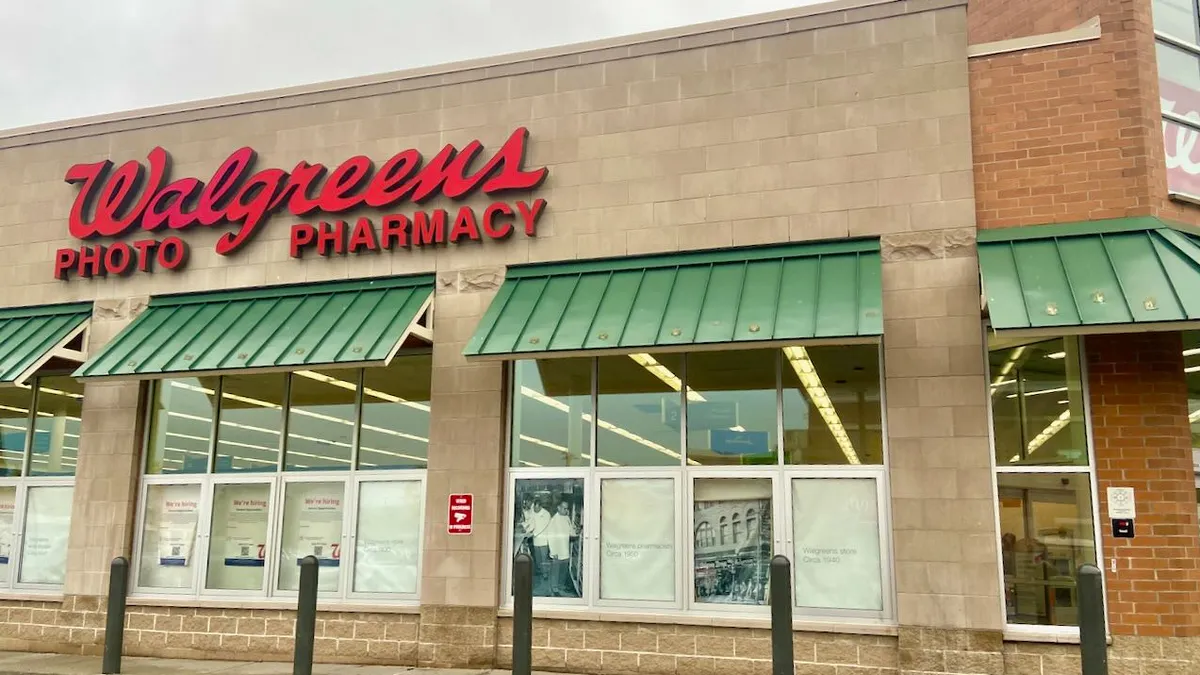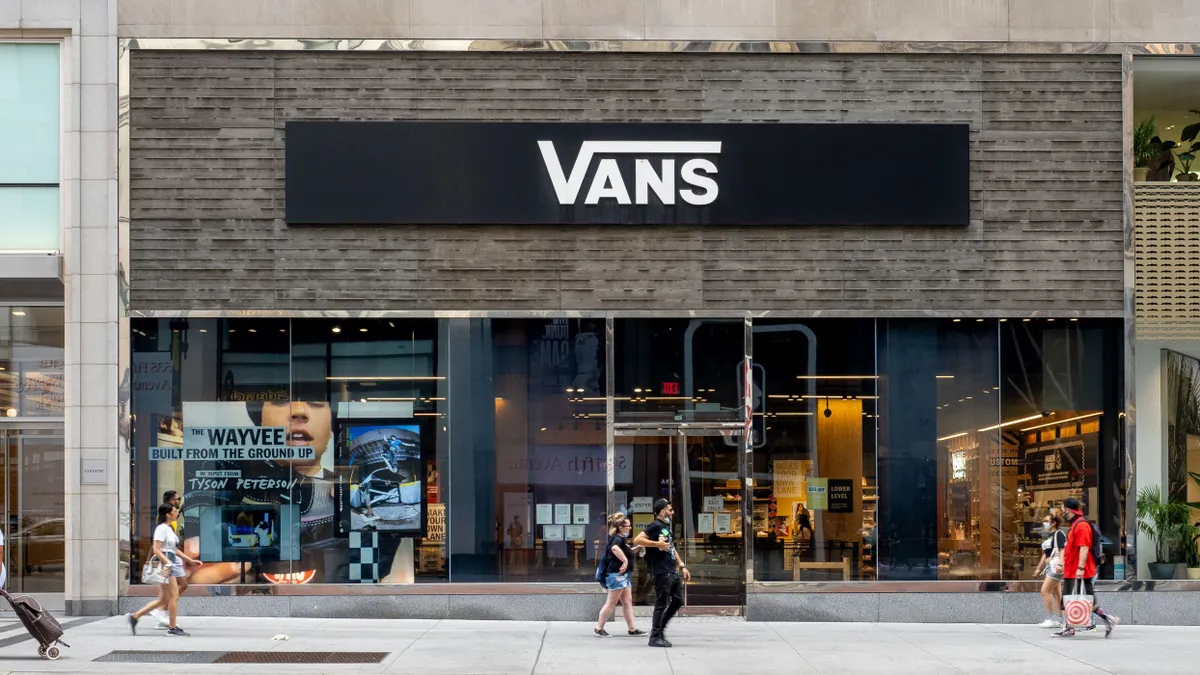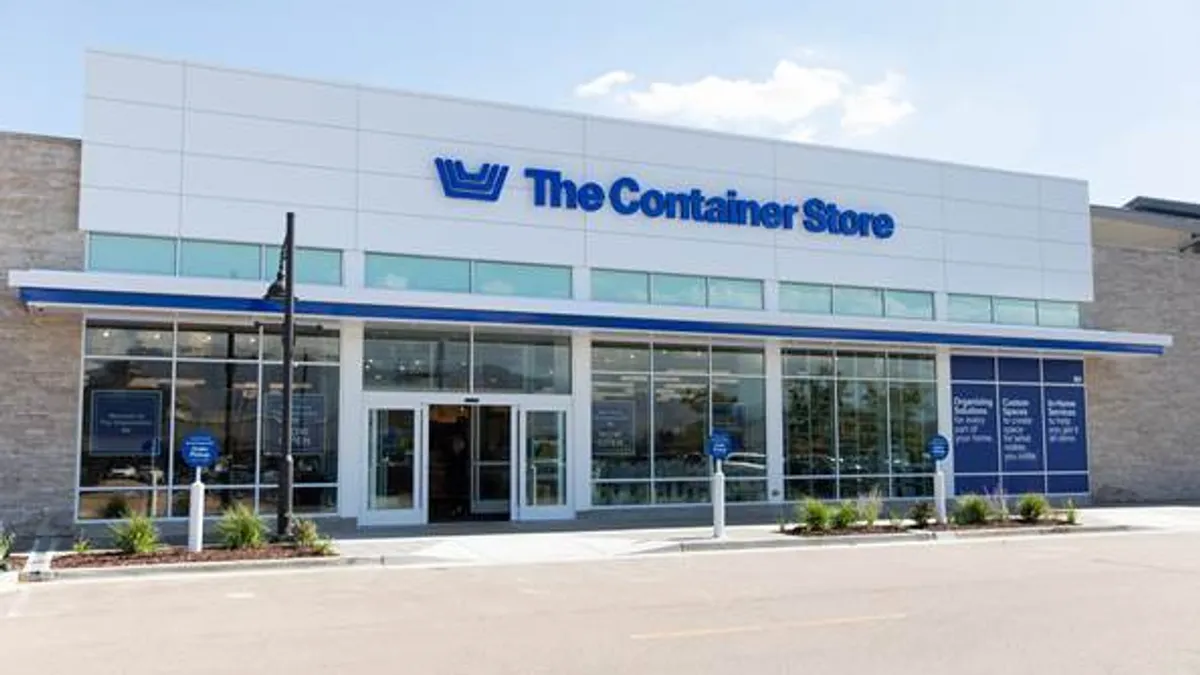Department stores were once magnificent fixtures of downtown America, then strong anchor tenants of malls. Now they can’t seem to catch a break. Many experienced tough holiday seasons and their Q4 earnings reports reflected that, missing expectations and leading Kohl’s and Macy’s to tell their investors that they’d be closing stores.
For a while there, Seattle-based Nordstrom—co-founded in 1887 by a Swedish immigrant as a shoe store and still counting Nordstrom family members in its top ranks—seemed to have shrugged off the troubles plaguing other department stores. But its last two quarters, which saw muted sales and weak store traffic, show that it may not be immune after all. In a conference call with investors last month, co-president Blake Nordstrom acknowledged the trouble and said the retailer would be reducing expenses to boost profits.
Yet many experts tell Retail Dive that there is something different about Nordstrom—and that those differentiators give it a good chance of thriving, even within the embattled department store niche.
What is it about Nordy’s?
Many consumers in the western U.S., home to the highest number of Nordstrom stores, call the retailer by an affectionate nickname, "Nordy’s," probably in large part due to its reputation for customer service. Nordstrom is so famous for its liberal return policy, for example, that its greatest customer-service myth—that they'll take back snow tires they've never sold—is actually true. Well, close enough: In the 1970s, the company bought a store in Alaska that once included a tire retailer. When a customer brought back tires, Nordstrom figured he had bought them there, and allowed the return.
Clearly, at that moment, Nordstrom lost money on the deal. After all, it honored a return on an item it didn't even sell. Then again, the company has been feasting off the positive public relations from that event since 1975. For the price of a set of snow tires, the retailer bought itself decades of goodwill.
Shelley E. Kohan, VP of retail consulting at store analytics firm RetailNext, said that customer service is embedded in Nordstrom's culture.
“In my opinion, they use design thinking,” Kohan told Retail Dive. “They put the customer in the center, and they think, ‘How does this impact the customer?’ I think they constantly say, ‘How do we remove pain points?’ A good example is when they recently announced that they’ll take back returns from full-line stores at their [off-price] Rack stores.” (Nordstrom did not respond to requests for comment.)
Retail futurist Doug Stephens, who blogs at the Retail Prophet and is author of "The Retail Revival," echoed Kohan's sentiment.
“I think that Nordstrom has a very good sense of self,” Stephens told Retail Dive. “They understand who they are and what makes them strong, but at the same time they don’t rest on those laurels. And they are a company that is in touch with technology. They aren’t afraid to try new things and experiment.”
Nordstrom Rack
The off-price apparel retail sector has become a shining city on the hill for retailers looking to cash in. Saks Fifth Avenue, Bloomingdale’s, Macy’s (which is testing outlet stores, dubbed Backstage, in various spots in New York City and within some of its stores) and others with off-price divisions are all chasing the success of TJX stores. That retailer, which includes T.J. Maxx and Marshalls, recently reported Q4 results with a bravado notably absent from the reports posted by department stores, trumpeting increased traffic, increased sales and increased profits.
Nordstrom opened its first Nordstrom Rack off-price store in Seattle in 1975, and has recently accelerated its growth strategy for its Rack stores. But beyond its early entrance in the space, Kohan said the retailer is “absolutely by far the best at outlet.”
“I’m not talking about T.J. Maxx—those are two different formats,” she said. “But as far as the outlet, [most department stores] can't figure it out, but Nordstrom Rack kills it.”
Kohan credits the merchandise mix in Rack stores, the store set-up and Nordstrom's signature customer service, even though the latter is not as personalized as that in the company's full-line stores, she said.
“Many of the existing outlet formats struggle with merchandise assortment, and a lot of players in the outlet market today actually do cannibalize their full-line stores,” Kohan said. “But for Nordstrom there’s a definite Rack customer, and a definite full-line customer, and some do both.”
Stephens and Kohan also credit Nordstrom's other channels, like its flash-sales HauteLook site and its online personal stylist and retail site Trunk Club, which recently opened its wares and services to both women and men, an expansion from its roots as a menswear-only startup.
“Not only do they look for new brands, but they also look for different ways of doing business,” Kohan said.
Caution ahead
There are other reasons that Nordstrom may be escaping some of the more dire situations that other department stores find themselves in, and some of them have little to do with its strategies or its culture.
Nordstrom, for example, operates just 323 stores in 39 states and Canada, with 121 full-line stores and 194 Rack stores, points out Greg Petro, CEO of retail merchandising and design consultancy First Insight. Compare that to Macy’s, which runs 850 Macy’s and Bloomngdale’s department stores in 45 states, Washington, D.C., Guam and Puerto Rico.
“Keep in mind, Nordstrom’s revenues are not the size of Macy’s,” Petro told Retail Dive. “It’s unfair to compare Macy’s to Nordstrom because their customer bases are different, their sizes are different. Each of them has carved out a niche, meeting different desires and needs.”
Petro believes that the department store is indeed going to continue to represent a shrinking segment of American retail. “And that will be ongoing for long periods of time, not because it’s not your grandmother’s model or your dad’s model, but because a department store is an aggregator of brands,” Petro said. The mall itself is an aggregator of brands, he added, so the department store, as another mini-mall, has less of a raison d’etre.
But Nordstrom’s size is an advantage, Petro believes, because at Macy’s scale, connecting with consumers is difficult. “I believe that retail companies need to be a bit more thoughtful about how they move forward with their businesses,” Petro said. “That’s why you see Nordstrom taking a very creative approach in some of the strategies they’ve talked about. They’re not stagnant in their thought process.”
What could trip them up, said Stephens, is that note from Blake Nordstrom about cutting costs.
“Cost-cutting and luxury department store experiences don’t often mix very well,” Stephens said. “The first thing you do is cut people because it's a huge [expense]. Nordstrom has this old fashioned, very personalized, great level of service for which they’ve become notorious. The moment you start cutting into that, and you have one salesperson working in two departments, it becomes a horrible downward spiral. My adage is: 'Don’t spend your effort trying to cost less—spend your effort trying to bring even more value to customers, and make yourselves even more indispensable to them.'”
Those cuts at least so far appear to be coming first from the retailer's IT division. About 10 employees lost their jobs in the company's restructuring of its IT operations last week, according to Geekwire, although the company says that revamp will also mean keeping its 2015 spending level of $300 million for this year.
That pressure to cut costs, of course, comes mainly from investors (whom some experts say have an outsized influence on retailers these days) and puts Nordstrom in a tight spot. Many of the most expensive aspects of its operations—its free shipping and free returns on merchandise sold online, or accepting full-line returns at Rack stores—come out of its customer-centric culture. If Nordstrom goes too far to please its shareholders and puts their concerns ahead of shopper expectations, it may be investors rather than loyal customers using that affectionate sobriquet "Nordy's"... and that could turn it into just another department store.




















